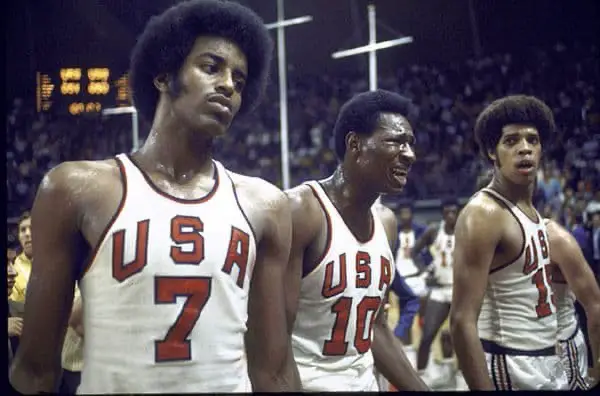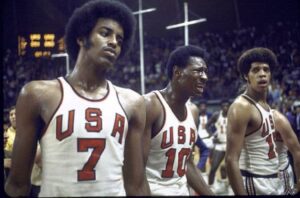The American Love Affair with Basketball: History, Culture, and Legacy


Meta Description: Explore the fascinating history of basketball, from its invention to becoming an American cultural icon. Learn how basketball evolved and shaped American society.
Introduction
Basketball is more than just a sport—it is an essential part of American culture and identity. From humble beginnings in a YMCA gym to becoming a billion-dollar industry, basketball reflects America’s values of innovation, competition, and community.
In this article, we’ll explore the origins of basketball, its growth alongside American society, and how the sport continues to shape and be shaped by the cultural landscape of the United States.
The Invention of Basketball: A Game is Born
The story of basketball begins in December 1891, when Dr. James Naismith, a Canadian physical education instructor, created the game in Springfield, Massachusetts. Naismith sought to develop an indoor sport to keep his students active during the harsh New England winters.
Key Moments in the Invention of Basketball:
Objective: Naismith wanted a game that was safe, promoted teamwork, and required skill over physical force.
The First Game: Naismith used a soccer ball and two peach baskets as goals. There were 13 original rules, including no dribbling and no running with the ball.
Rapid Popularity: The sport quickly gained popularity at YMCA centers across the United States and beyond.
The simplicity of basketball and its accessibility allowed it to spread rapidly through schools, colleges, and community centers, laying the foundation for a cultural phenomenon.
Basketball’s Early Growth and American Society
As basketball grew, it began to reflect the broader themes of American society, including urbanization, racial integration, and community development.
- Basketball in American Colleges
By the early 20th century, basketball became a staple in American colleges. The first recorded college basketball game took place in 1895 between the University of Chicago and the University of Iowa.
NCAA Formation (1906): The growth of college basketball led to the formation of the National Collegiate Athletic Association (NCAA), which standardized rules and organized competitions.
March Madness (1939): The NCAA held its first men’s basketball championship, later known as “March Madness,” becoming one of the most popular sporting events in the United States.
- Professional Basketball Emerges
Basketball Associations: The Basketball Association of America (BAA) was founded in 1946, later merging with the National Basketball League (NBL) in 1949 to form the National Basketball Association (NBA).
The NBA’s Impact: The NBA transformed basketball from a recreational sport to a professional powerhouse, highlighting American values of competition and entertainment.
Basketball and Civil Rights in America
Basketball played a pivotal role in the Civil Rights Movement, breaking racial barriers and promoting social change.
- Integration of Basketball
Early Exclusion: Like much of American society, professional basketball was segregated during the early 20th century.
First Black Players: In 1950, Earl Lloyd, Chuck Cooper, and Nat “Sweetwater” Clifton became the first African Americans to play in the NBA, marking a critical step toward racial equality.
- Basketball as a Platform for Social Justice
Bill Russell: An 11-time NBA champion with the Boston Celtics, Russell was a vocal advocate for civil rights and racial justice.
Kareem Abdul-Jabbar: A legendary player and activist who used his platform to challenge racial inequality in America.
Basketball has continued to be a powerful vehicle for social change, with modern players like LeBron James and Stephen Curry speaking out on issues such as racial injustice and inequality.
The Cultural Significance of Basketball in America
Basketball is not just a sport—it is deeply intertwined with American culture.
- Basketball and Urban America
Community Identity: Basketball courts became a central part of urban neighborhoods, offering youth a place to gather and develop their skills.
Streetball Culture: Popularized by the AND1 Mixtape Tour, streetball brought creativity and flair to the sport, highlighting the improvisational nature of basketball.
- Basketball in Popular Culture
Movies and Television: Films like Hoosiers (1986) and Space Jam (1996) showcased basketball’s influence on American entertainment.
Music: Hip-hop culture and basketball have grown together, with many artists referencing the sport in their lyrics and collaborations with NBA players.
The Globalization of American Basketball
Although basketball was invented in America, its influence has spread worldwide.
- The 1992 Dream Team
The 1992 U.S. Olympic Basketball Team, known as the Dream Team, featured legends like Michael Jordan, Magic Johnson, and Larry Bird. Their dominance at the Barcelona Olympics brought unprecedented global attention to the NBA.
- International NBA Stars
American basketball has embraced international players, including:
Dirk Nowitzki (Germany)
Yao Ming (China)
Giannis Antetokounmpo (Greece)
These players have not only excelled in the NBA but also inspired young athletes across the globe to pursue basketball.
Basketball’s Role in American Identity
Basketball reflects the core values of American society:
- Innovation: From Naismith’s original game to modern-day analytics and advanced training methods, basketball embodies the American spirit of progress.
- Diversity: The NBA is one of the most diverse professional leagues, with players from over 40 countries contributing to the sport.
- Resilience: Stories of players overcoming hardship—like Michael Jordan’s early struggles or LeBron James’ upbringing—resonate with the American ethos of perseverance.
Modern Basketball and Its Future in America
As basketball evolves, it continues to reflect the changing dynamics of American life.
- The Rise of Women’s Basketball
The Women’s National Basketball Association (WNBA), founded in 1996, has provided a platform for female athletes to showcase their talent and advocate for social change.
- Technology and Analytics
Advancements in technology—such as wearable devices, AI analytics, and virtual fan experiences—are transforming how basketball is played and consumed.
- Youth Development and Accessibility
Programs like Jr. NBA and local leagues provide opportunities for young athletes to engage with basketball regardless of socioeconomic status, keeping the sport closely tied to community development.
Conclusion: Basketball—A Reflection of America
From its humble beginnings to becoming a global phenomenon, basketball mirrors America’s journey—rooted in innovation, diversity, and community. Whether on a local playground or an NBA arena, basketball remains a unifying force that continues to shape and reflect the values of American society.
As the sport continues to evolve, it will undoubtedly maintain its unique relationship with America, inspiring future generations to dream big and play hard.
FAQs
- Who invented basketball, and why?
Basketball was invented by Dr. James Naismith in 1891 to create an indoor sport that promoted physical fitness during the winter. - How did basketball become popular in America?
Basketball spread quickly through YMCA centers, colleges, and later, professional leagues like the NBA, which brought national and global attention. - What role did basketball play in the Civil Rights Movement?
Basketball helped break racial barriers, with players like Earl Lloyd and Bill Russell advocating for racial equality. - How has basketball influenced American culture?
Basketball has impacted music, film, and urban communities, while also serving as a platform for social justice. - What is the future of basketball in America?
The future of basketball includes the growth of the WNBA, technological advancements, and expanded youth programs fostering inclusivity and opportunity.




